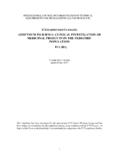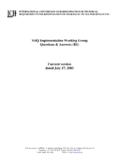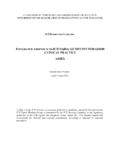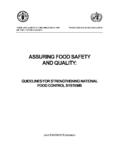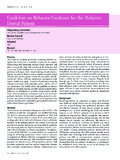Transcription of ICH HARMONISED TRIPARTITE GUIDELINE
1 INTERNATIONAL CONFERENCE ON HARMONISATION OF TECHNICAL REQUIREMENTS FOR REGISTRATION OF PHARMACEUTICALS FOR HUMAN USE ICH HARMONISED TRIPARTITE GUIDELINE SPECIFICATIONS: TEST PROCEDURES AND ACCEPTANCE CRITERIA FOR NEW DRUG SUBSTANCES AND NEW DRUG PRODUCTS: CHEMICAL SUBSTANCES Q6A Current Step 4 version dated 6 October 1999 This GUIDELINE has been developed by the appropriate ICH Expert Working Group and has been subject to consultation by the regulatory parties, in accordance with the ICH Process. At Step 4 of the Process the final draft is recommended for adoption to the regulatory bodies of the European Union, Japan and USA. Q6A Document History First Codification History Date New Codification November 2005 Q6A Approval by the Steering Committee under Step 2 and release for public consultation.
2 18 July 1997 Q6A Current Step 4 version Q6A Approval by the Steering Committee under Step 4 and recommendation for adoption to the three ICH regulatory bodies. 6 October 1999 Q6A SPECIFICATIONS: TEST PROCEDURES AND ACCEPTANCE CRITERIA FOR NEW DRUG SUBSTANCES AND NEW DRUG PRODUCTS: CHEMICAL SUBSTANCES ICH HARMONISED TRIPARTITE GUIDELINE Having reached Step 4 of the ICH Process at the ICH Steering Committee meeting on 6 October 1999, this GUIDELINE is recommended for adoption to the three regulatory parties to ICH TABLE OF CONTENTS 1. INTRODUCTION .. 1 Objective of the GUIDELINE .. 1 Background .. 1 Scope of the GUIDELINE .. 1 2. GENERAL CONCEPTS .. 2 Periodic or Skip Testing .. 2 Release vs. Shelf-life Acceptance Criteria .. 2 In-process Tests .. 3 Design and Development Considerations .. 3 Limited Data Available at Filing.
3 3 Parametric Release .. 4 Alternative Procedures .. 4 Pharmacopoeial Tests and Acceptance Criteria .. 4 Evolving Technologies .. 5 Impact of Drug Substance on Drug Product Specifications .. 5 Reference Standard .. 5 3. guidelines .. 5 Specifications: Definition and Justification .. 5 Definition of Specifications .. 5 Justification of Specifications .. 6 i Specifications: New Chemical Drug Substances and Products ii Universal Tests / Criteria .. 6 New Drug Substances .. 6 New Drug Products .. 7 Specific Tests / Criteria .. 8 New Drug Substances .. 8 New Drug Products .. 10 4. GLOSSARY .. 18 5. REFERENCES .. 20 6. ATTACHMENTS .. 20 SPECIFICATIONS: TEST PROCEDURES AND ACCEPTANCE CRITERIA FOR NEW DRUG SUBSTANCES AND NEW DRUG PRODUCTS: CHEMICAL SUBSTANCES 1. INTRODUCTION Objective of the GUIDELINE This GUIDELINE is intended to assist to the extent possible, in the establishment of a single set of global specifications for new drug substances and new drug products.
4 It provides guidance on the setting and justification of acceptance criteria and the selection of test procedures for new drug substances of synthetic chemical origin, and new drug products produced from them, which have not been registered previously in the United States, the European Union, or Japan. Background A specification is defined as a list of tests, references to analytical procedures, and appropriate acceptance criteria, which are numerical limits, ranges, or other criteria for the tests described. It establishes the set of criteria to which a drug substance or drug product should conform to be considered acceptable for its intended use. "Conformance to specifications" means that the drug substance and / or drug product, when tested according to the listed analytical procedures, will meet the listed acceptance criteria.
5 Specifications are critical quality standards that are proposed and justified by the manufacturer and approved by regulatory authorities as conditions of approval. Specifications are one part of a total control strategy for the drug substance and drug product designed to ensure product quality and consistency. Other parts of this strategy include thorough product characterization during development, upon which specifications are based, and adherence to Good Manufacturing Practices; , suitable facilities, a validated manufacturing process, validated test procedure, raw material testing, in-process testing, stability testing, etc. Specifications are chosen to confirm the quality of the drug substance and drug product rather than to establish full characterization, and should focus on those characteristics found to be useful in ensuring the safety and efficacy of the drug substance and drug product.
6 Scope of the GUIDELINE The quality of drug substances and drug products is determined by their design, development, in-process controls, GMP controls, and process validation, and by specifications applied to them throughout development and manufacture. This GUIDELINE addresses specifications, , those tests, procedures, and acceptance criteria which play a major role in assuring the quality of the new drug substance and new drug product at release and during shelf life. Specifications are an important component of quality assurance, but are not its only component. All of the considerations listed above are necessary to ensure consistent production of drug substances and drug products of high quality. This GUIDELINE addresses only the marketing approval of new drug products (including combination products) and, where applicable, new drug substances; it does not address drug substances or drug products during the clinical research stages of drug development.
7 This GUIDELINE may be applicable to synthetic and semi-synthetic antibiotics and synthetic peptides of low molecular weight; however, it is not sufficient 1 Specifications: New Chemical Drug Substances and Products to adequately describe specifications of higher molecular weight peptides and polypeptides, and biotechnological/biological products. The ICH GUIDELINE Specifications: Test Procedures and Acceptance Criteria for Biotechnological/Biological Products addresses GUIDELINE specifications, tests and procedures for biotechnological/biological products. Radiopharmaceuticals, products of fermentation, oligonucleotides, herbal products and crude products of animal or plant origin are similarly not covered. Guidance is provided with regard to acceptance criteria which should be established for all new drug substances and new drug products, universal acceptance criteria, and those that are considered specific to individual drug substances and / or dosage forms.
8 This GUIDELINE should not be considered all encompassing. New analytical technologies, and modifications to existing technology, are continually being developed. Such technologies should be used when justified. Dosage forms addressed in this GUIDELINE include solid oral dosage forms, liquid oral dosage forms, and parenterals (small and large volume). This is not meant to be an all-inclusive list, or to limit the number of dosage forms to which this GUIDELINE applies. The dosage forms presented serve as models, which may be applicable to other dosage forms which have not been discussed. The extended application of the concepts in this GUIDELINE to other dosage forms, , to inhalation dosage forms (powders, solutions, etc.), to topical formulations (creams, ointments, gels), and to transdermal systems, is encouraged.
9 2. GENERAL CONCEPTS The following concepts are important in the development and setting of harmonized specifications. They are not universally applicable, but each should be considered in particular circumstances. This GUIDELINE presents a brief definition of each concept and an indication of the circumstances under which it may be applicable. Generally, proposals to implement these concepts should be justified by the applicant and approved by the appropriate regulatory authority before being put into effect. Periodic or Skip Testing Periodic or skip testing is the performance of specified tests at release on pre-selected batches and / or at predetermined intervals, rather than on a batch-to-batch basis with the understanding that those batches not being tested still must meet all acceptance criteria established for that product.
10 This represents a less than full schedule of testing and should therefore be justified and presented to and approved by the regulatory authority prior to implementation. This concept may be applicable to, for example, residual solvents and microbiological testing, for solid oral dosage forms. It is recognized that only limited data may be available at the time of submission of an application (see section ). This concept should therefore generally be implemented post-approval. When tested, any failure to meet acceptance criteria established for the periodic test should be handled by proper notification of the appropriate regulatory authority(ies). If these data demonstrate a need to restore routine testing, then batch by batch release testing should be reinstated. Release vs.
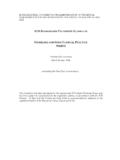
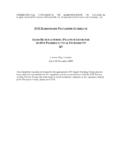
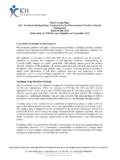
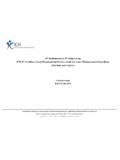
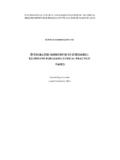
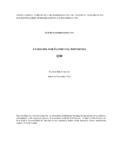
![[ICH E2F] [EXAMPLE DSUR – PHASE III …](/cache/preview/1/3/5/f/e/1/c/f/thumb-135fe1cf2cdb82799c462ad0ea089c48.jpg)
